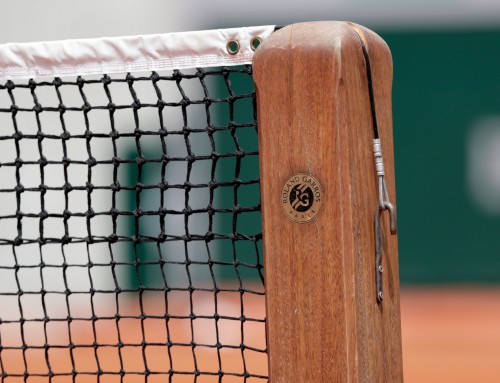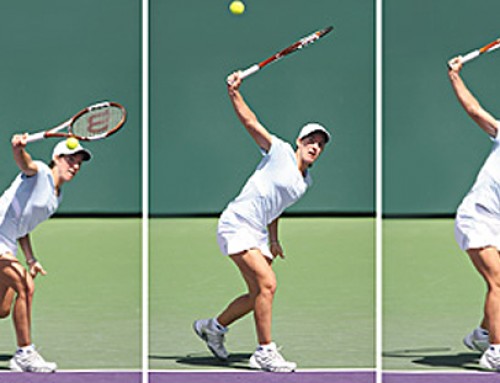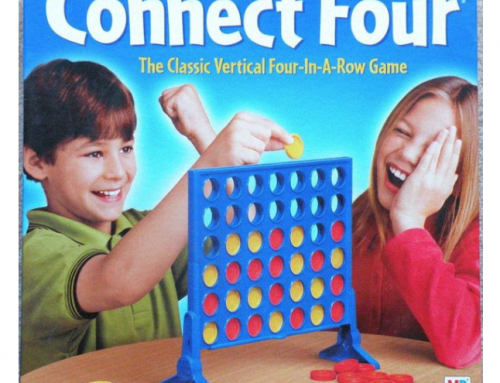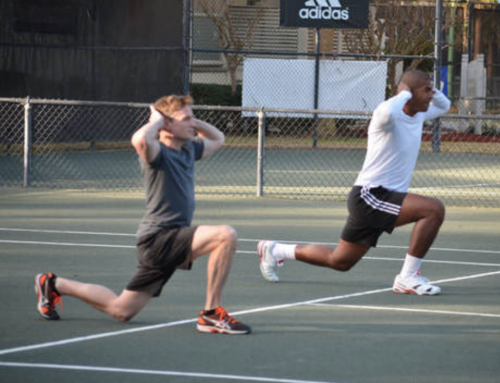Hate getting cheated out of a tennis point?
Of course you do…
You’ve worked hard to improve your strokes, tactics, and fitness to play as competitively as possible.
That’s why most tennis players react so poorly to bad calls.
Justice must be served, right??
If only everybody understood the truth: that incorrect line calls are routine on BOTH sides of the court!
That was the focus on Part 1 in this special series on dealing with tennis cheaters.
If you haven’t already checked it out definitely do so.
You can click here.
The bottom line was this: calling lines is much, much more difficult than people think and 99% of bad calls are completely unintentional.
Using the mindset I revealed will defuse the vast majority of your bad call situations, making competition much more fun and enjoyable.
However…
There ARE those 1% of cases where an opponent is purposefully making an incorrect call. It would be foolish of me to ignore those, because sooner or later you WILL have to deal with them.
You’re about to learn 5 different tactics that can quickly get things under control and put you back on an even playing field with your opponent.
They range from completely tame all the way to the “nuclear option” which I would almost never personally condone.
Let’s jump right into it.
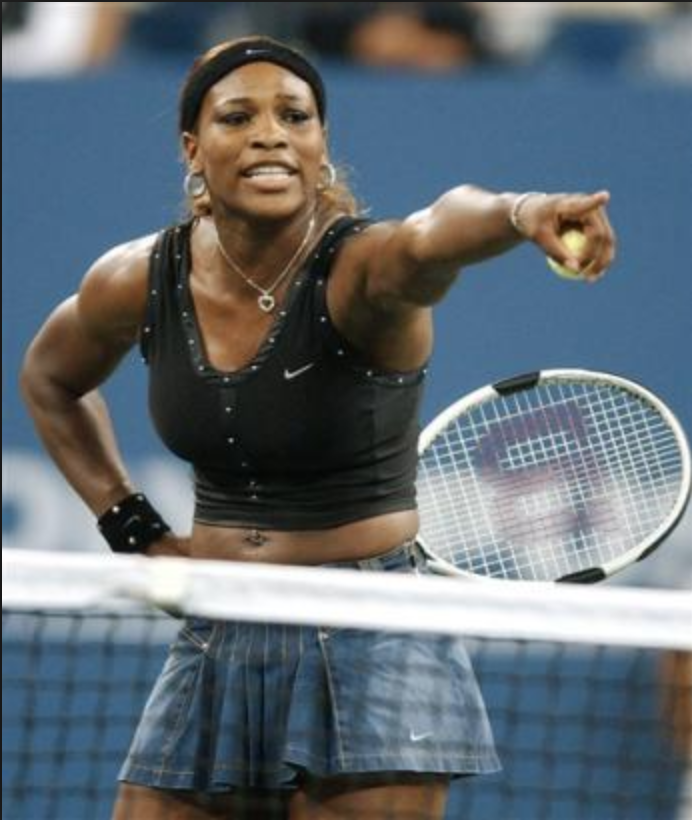
==================
Tactic 1: The Infamous Question
This is your Plan A every time.
It’s probably the most asked question on competitive tennis courts:
“Are you sure?”
Remember – 99% of bad calls are completely unintentional.
It very well could be that the call was incorrect, but your first (and second, and third) response should never be to accuse somebody of outright cheating.
In fact, I wouldn’t even ask with any kind of annoyance or animosity in your tone of voice.
No need to raise tensions or make them feel attacked. The whole point here is simply letting them know that you’re wanting as fair of a match as possible.
If “are you sure?” feels too confrontational to you I recommend this question instead: “how far out was it?”.
I use that one all the time to test an opponent’s ability to precisely recall exactly where they think the ball landed.
Remember – You’re NOT asking these questions to start an argument or immediately jump down your opponent’s throat if they don’t give the answer you want.
You’re simply sending a quick message that you want the most accurate calls they can give.
Accept their answer 100%, let it go, and move on to the next point immediately.
The vast majority of people you play want a fair match, too!
They would never, ever make a bad call on purpose, so simply asking for verification is usually enough to tighten things up and get the best calls possible.
They still might make mistakes, and that’s fine!
We all make them 🙂
==================
Tactic 2: Circle the Mark
If there are repeated calls that you believe are suspect, and you happen to be playing on clay, then you have the right to ask them to circle the mark the ball made!
This is super useful, and almost always clears up any misunderstandings or incorrect calls.
Make sure to ask right away so they don’t lose track of which mark is which.
Keep in mind that the rules prohibit you crossing over to their side of the court to check it yourself…
If you’re playing on hard courts then unfortunately this isn’t an option.
==================
Tactic 3: Request a 3rd Party
If poor calls persist and you suspect that they’re malicious (please remember….VERY rare!) then in some cases you have the option to request a third party line judge.
This happened from time to time at the clubs I taught at before I started focusing on digital content full time.
Usually it was a men’s or women’s league match against another area club and one of the teaching pros would go out and officiate a court for both sides.
If you’re playing in a USTA sanctioned event then there may be officials available for you to take advantage of as well.
==================
Tactic 4: Adjust Your Targets
If you’re on a court court and a third party official isn’t available then this is your best and practically only course of action.
Frankly, its probably the best one, even though in the moment you’ll be tempted to feel pretty angry about it.
Simply give yourself more margin for error inside the lines and pick targets that have a little more built in safety.
I know that isn’t a very satisfying solution…but please realize something important:
Only a small percentage of total shots in a match land anywhere near a line, and you should never be aiming close to one, anyway!
Tennis is a game of error management, even when the lines are being called 100% correct.
If you’re frequently landing shots within a foot of any line then your targets need to be adjusted.
Period.
That isn’t margin to win consistently, even at a professional level.
Here in the office Kevin made a great comment that when his opponent makes a bunch of suspect calls he uses it for motivation.
It causes him to deepen his focus, sharpen his resolve, and really hunker down to do whatever it takes to win, even if that means aiming every shot 10 feet inside the lines.
Honestly, I think that response combined with “let it go” is the absolute best you can do in 99% of cases where somebody is purposefully cheating you.
Getting super angry isn’t going to change anything.
It certainly isn’t going to help you play better.
Take the challenge head on and make the adjustments needed to give yourself the best chance of winning.
==================
Tactic 5: The Nuclear Option
I want to be 100% clear right up front here…
I do not officially condone this tactic, but I have seen it used effectively before.
In short, the “nuclear option” is making a very bad, very obvious retaliation call to send a message to an opponent who is clearly making malicious call after malicious call.
Back in college one of my teammates was getting hooked over and over again.
The point after an especially bad call his opponent hit a shot to the center of the court, at least 15 feet away from any line, and my teammate called it out.
His opponent obviously protested but he stuck by the call.
The message got across loud and clear and the rest of the match played out without any incidents or arguments.
Now…
That being said, I’ve also heard stories of the “nuclear option” resulting in a fistfight.
It’s extreme, aggressive, and your opponent is sure to be offended, which is why I clearly can’t recommend its use.
There are extreme circumstances where a strong message must be sent to an opponent, but the vast majority of players reading my words won’t ever play tennis for money.
Much less for a living.
And so, frankly, I believe its better to take the high road and go down with your honor and dignity intact than start an all out war over a club ladder match or league match.
I want to help players enjoy the game more and more, and sometimes that means disengaging from a toxic situation or person to preserve your own happiness and sanity.
==================
Takeaway: When somebody is clearly making malicious calls (only 1% of the time!) there are a lot of different ways to respond.
The absolute best course of action is always “let it go” and move on to the next point…
…but sometimes more is required.
Did reading these tactics, mindsets, and responses help?
Are there any others that you’ve found useful that I left out?
Shoot me a quick comment below and let me know.
Thanks so much for reading.



